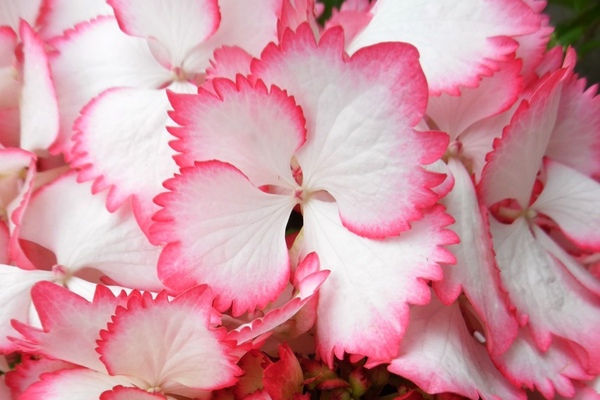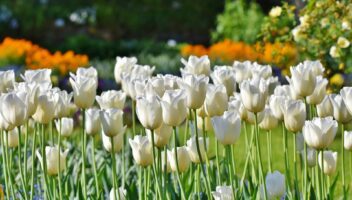Hydrangea have long been one of the most popular garden shrubs thanks to their reliable, long- flowering period from late spring to early autumn. They are also famed for their ability to change colour, which typically happens as the plant matures in late summer. Their colour also depends on the pH level of the soil, with higher acidity levels resulting in blue flowers and alkaline soil producing pink flowers.
These hardy shrubs are suitable for planting in a border or container, and most varieties begin flowering in June.
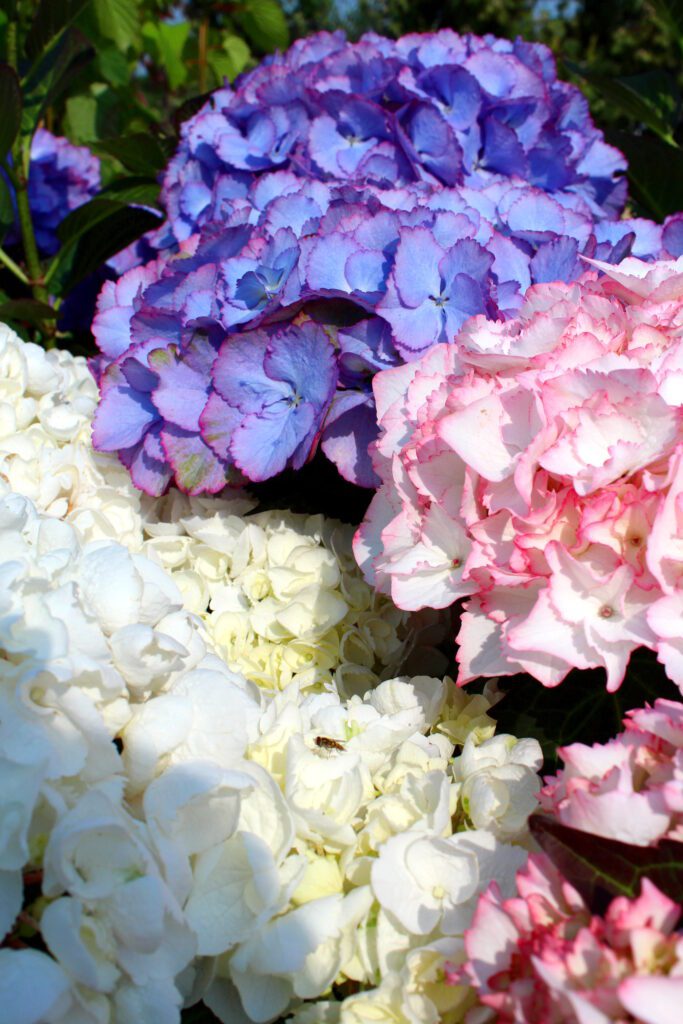
Top Varieties
Hydrangea macrophylla
Also known as French hydrangeas, lacecaps and mopheads are both classified as Hydrangea macrophylla. Each require the same growing conditions and are available in shades of pinks, purples, blues and white, depending on your soil type.
Mopheads are the nation’s favourite hydrangea and produce full, round heads of petals atop mid-green deciduous leaves. Lacecaps have flatter flowerheads made up of a small cluster of tiny fertile florets in the centre, surrounded by a ring of larger, sterile flowers.
| Sun requirements | Full sun to partial shade |
| Soil | Moist, but well drained |
| Hardiness | Hardy through most of the UK, even in winter |
| Size | Up to 2.5 meters spread and height |
| Flowering time | Summer |
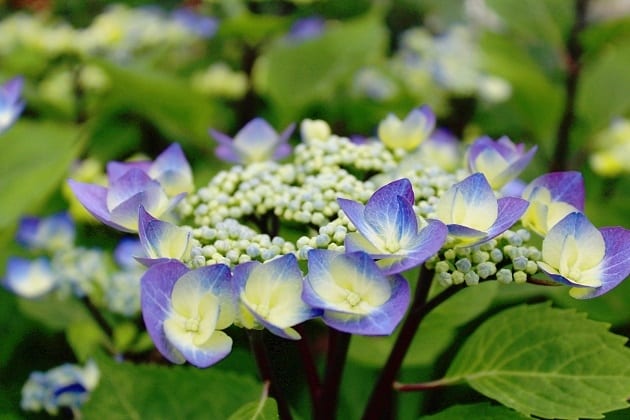
Hydrangea macrophylla ‘Kanmara’
A variety which we introduced at RHS Chelsea Flower Show 2016, ‘Kanmara’ is available in unique colours of deep pink, champagne, white, lilac and rose and has strong, stout stems and elegant deep-green foliage. Each variety changes colour as the buds unfurl and mature to large, majestic blooms.
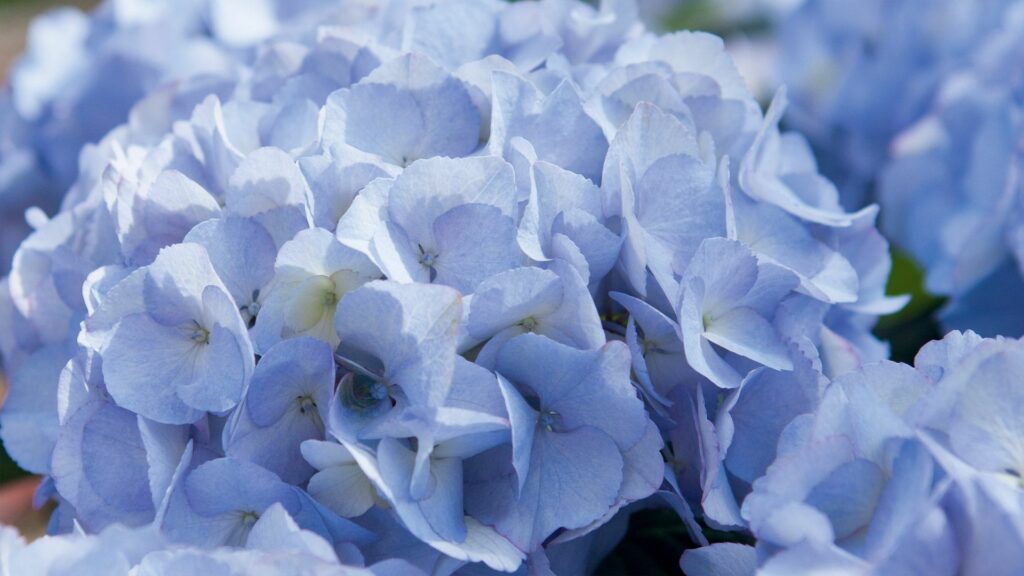
| Sun requirements | Full sun to partial shade |
| Soil | Moist, but well drained |
| Hardiness | Hardy through most of the UK, even in winter |
| Size | Up to 1.5m spread and 1m height |
| Flowering time | Summer |
Hydrangea paniculata
The panicle hydrangea is slightly different to other varieties in that it produces large, conical-shaped flowerheads of small fertile florets, surrounded by sterile ones, in late summer and early autumn. The blooms start off as creamy-white before turning to a subtle pink as they age. They can also be pruned to a tree form rather than a rounded shrub, making for quite the garden spectacle!
| Sun requirements | Full sun to partial shade |
| Soil | Moist, but well drained |
| Hardiness | Hardy through most of the UK, even in winter |
| Size | Up to 2.5m spread and 4m height |
| Flowering time | Summer |
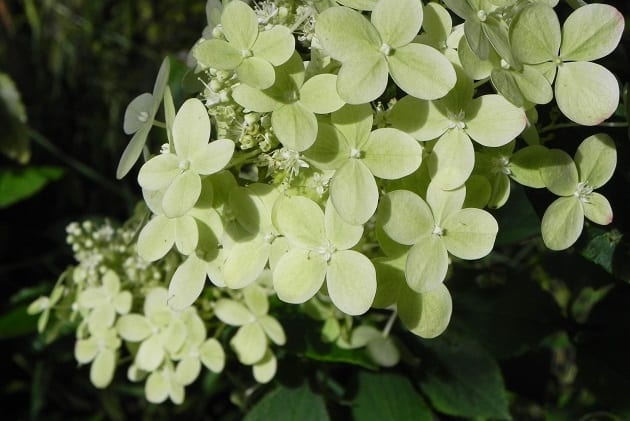
Hydrangea paniculata ‘Limelight’
Growing Care
Planting
- Hydrangeas can be planted in autumn or spring.
- If planting in a border, first add plenty of organic matter to enrich the soil. This can be compost, manure or leafmould. Next, dig a hole that is as deep as the rootball, and approximately two to three times as wide.
- Place the plant in the hole and fill about halfway with soil, water it, then fill the rest of the hole in. Water thoroughly, and continue to water often for the first few weeks to help the plant become established.
- If you’re planting multiple hydrangeas in a border, allow at least one metre (39 inches) of space between each one.
- Hydrangeas can make wonderful containers plants, too. Choose a pot that is at least 45 centimetres (18 inches) in diameter and use good quality potting compost with some organic matter mixed in. Water copiously.
Watering
Note that hard water can cause blue-flowering hydrangeas to turn mauve or pink, so use rainwater where possible if you want to keep your blue flowers… blue!
Pruning
Hydrangeas require some deadheading once a year. Once mopheads and lacecaps have finished flowering in autumn, the dead flowerhead can be removed. However, to give the shrubs more protection from frost over winter, it is best to leave the flowerheads and cut them off in early spring the following year.
Pruning established mopheads and lacecaps to encourage the production of new growth and more abundant flowering can be done by cutting one or two of the plant’s oldest stems to the base.
Complementary Planting Ideas
Hydrangeas typically love morning sunshine and afternoon shade, so choosing other plants that enjoy similar conditions will ensure you get a great display. Hostas, for example, have the same requirements as hydrangeas, and their striking foliage, particularly dark-green and variegated varieties, will complement the colourful hydrangea flowers perfectly.
Ornamental grasses will also make hydrangea blooms stand out, as well as adding in a new texture to a border. Blue fescue ‘Elijah Blue’ is a wonderful silvery blue colour and will create a fantastic contrasting look.
If it’s more flowers you’re looking for, then choosing to plant zinnias, lupins, marigolds or snapdragons close to your hydrangea will produce a riot of colour throughout the summer months.
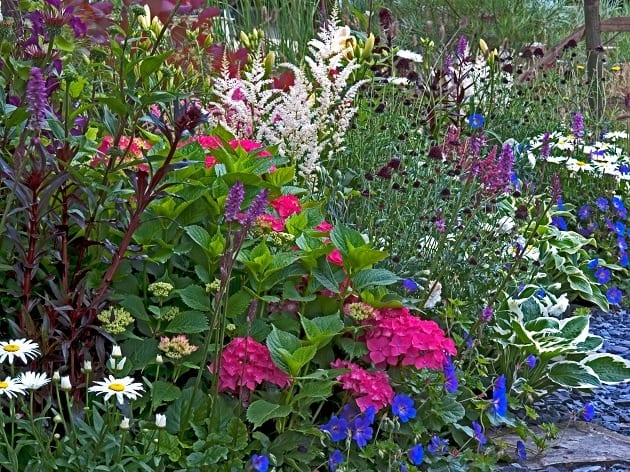
Hydrangea Fact
It is possible to change the colour of your hydrangea with a few tricks (although this does not apply to white hydrangeas). If the hydrangea is pink, there is aluminium present in the soil. If it is blue, there isn’t.
To change a blue hydrangea to pink, you can add aluminium sulphate to the soil to alter the pH level. Coffee grounds or pine needles will also do the job.
To transform a pink hydrangea to blue, adding lime or a fertiliser that is high in phosphorus will help to prevent aluminium from reaching the plant.
Altering the pH level of the soil will take a few weeks to take effect and will need to be repeated several times a year, and reaching a neutral pH level will produce purple flowers!


